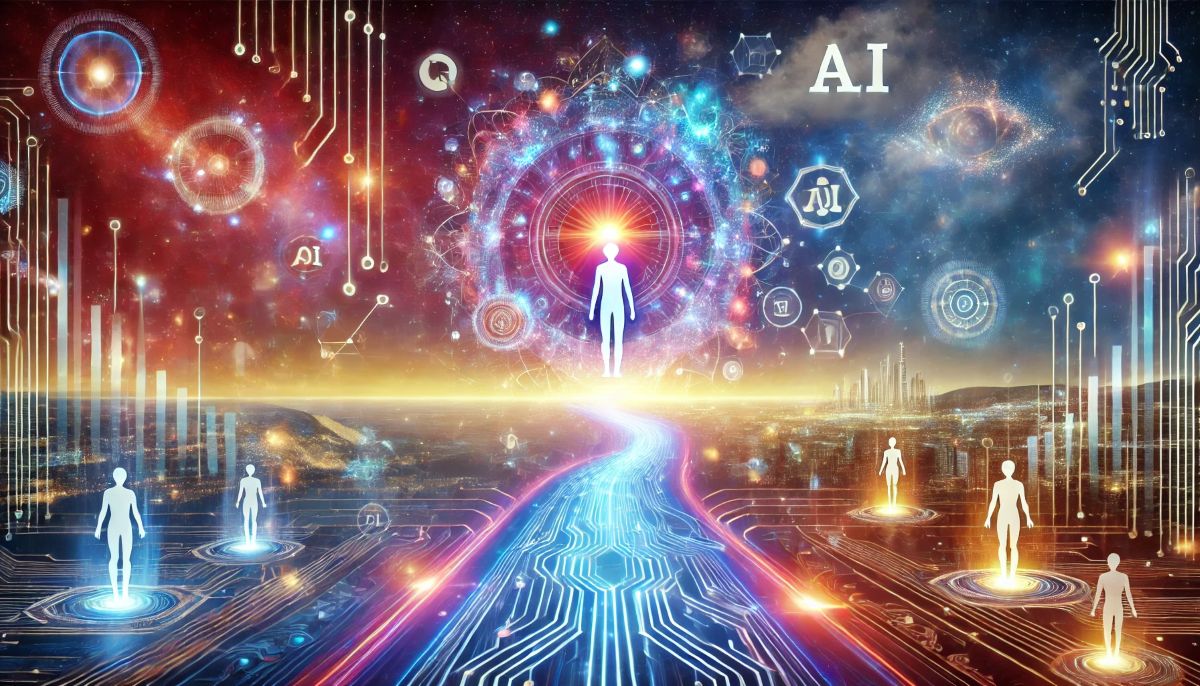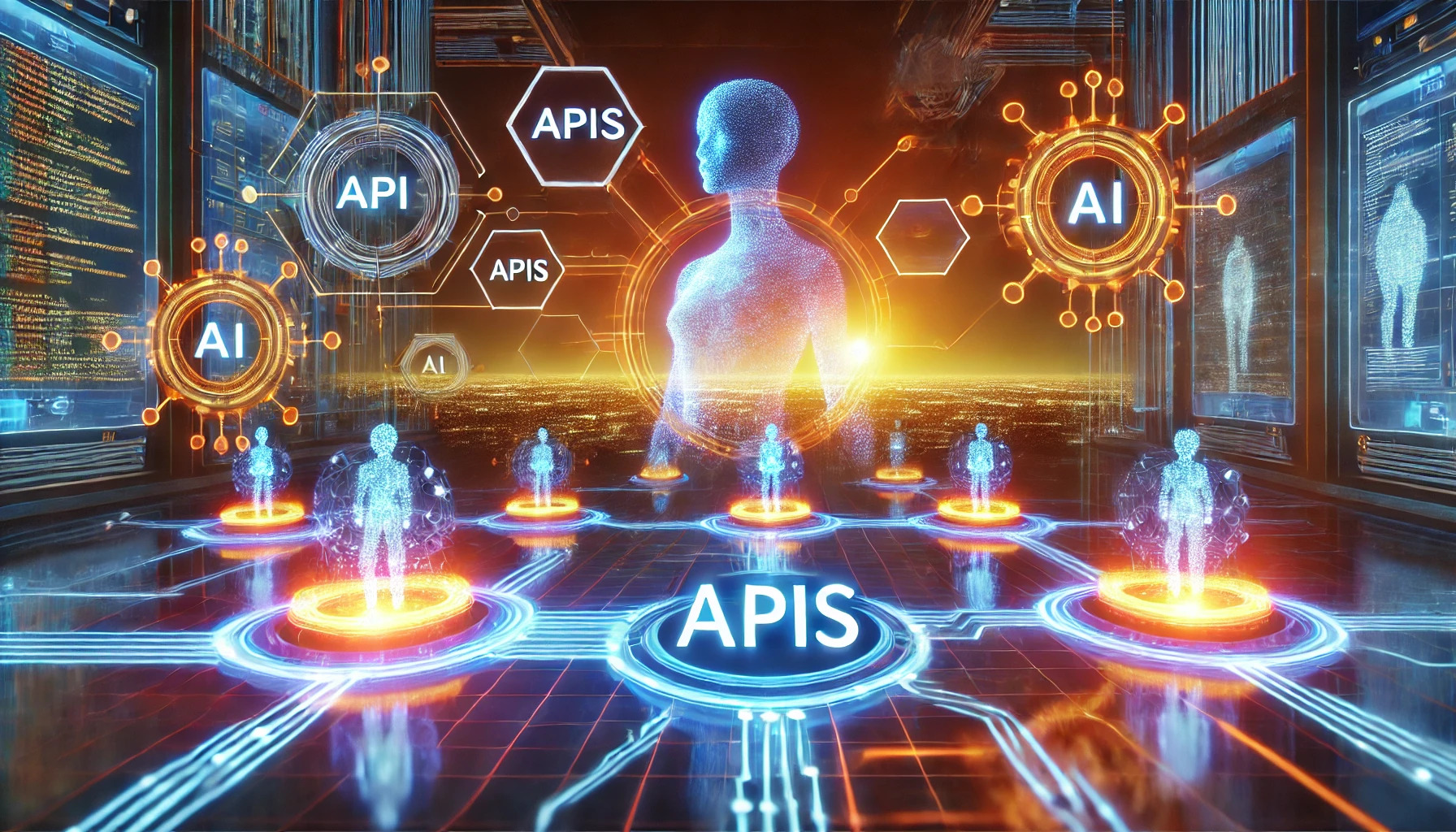What Is Agentic AI
February 23, 2025 • AI
Imagine a world where artificial intelligence (AI) doesn’t just follow pre-set instructions but can take independent actions based on the goals it’s been given. That’s what we mean by Agentic AI. It’s a step beyond traditional AI—more like a capable assistant that can think critically, make decisions, and adapt in real-time. Sounds futuristic, right? It’s not as far away as you might think.
What Makes AI Agentic?
Agentic AI isn’t magic. It’s built on the idea that AI systems can:
Perceive their environment—collect and interpret data.
Decide what actions to take—based on a combination of programming, learned behaviors, and real-time analysis.
Act independently—carry out actions without requiring constant human oversight.
Take a delivery robot, for example. Traditional AI might follow a simple route from point A to B. Agentic AI, however, could adapt if there’s a blocked path, choose a new route, and even communicate delays with the customer. It doesn’t just execute a task; it solves problems along the way.

Thanks, for sharing:
Agentic AI represents one of the most significant shifts in artificial intelligence development—moving from systems that simply respond to direct prompts to autonomous systems capable of taking independent actions to achieve goals. As these AI systems gain the ability to interact with the world around them, they bring both exciting possibilities and important ethical considerations.
Defining Agentic AI
At its core, agentic AI refers to artificial intelligence systems designed to act autonomously on behalf of a user or organization to accomplish specific tasks or goals. Unlike traditional AI models that simply generate outputs in response to inputs, agentic AI systems can:
Take independent actions based on their understanding of goals
Make decisions without requiring human input for each step
Interact with external systems and tools to accomplish objectives
Adapt their strategies based on changing circumstances
Maintain persistent awareness of their progress toward goals
The key distinction is autonomy—these systems don't just answer questions or generate content, they actively work toward objectives by planning and executing sequences of actions.
How Agentic AI Works
Agentic AI typically combines several key capabilities:
1. Goal Understanding
Agents must be able to interpret human instructions and convert them into actionable objectives. This requires:
Natural language understanding
Intent recognition
Constraint interpretation
Clarification when needed
2. Planning and Reasoning
Once goals are understood, agents must develop plans to achieve them:
Breaking complex goals into manageable steps
Identifying necessary resources and tools
Anticipating potential obstacles
Creating contingency strategies
3. Tool and API Utilization
Most agents don't work in isolation—they leverage external tools and services:
Calling APIs to access information or services
Using specialized tools for specific tasks
Integrating with existing software systems
Managing authentication and permissions
4. Action Execution
Agents must be able to put their plans into action:
Executing API calls
Manipulating data
Generating content
Sending communications
5. Progress Monitoring
Throughout the process, agents track their progress:
Evaluating success of actions
Detecting errors or failures
Adjusting plans as needed
Maintaining state across multiple interactions
Examples of Agentic AI Systems
Agentic AI is rapidly evolving, with several notable examples already in use:
Research Agents
AI systems that can autonomously:
Search for relevant information across multiple sources
Extract and synthesize key findings
Generate comprehensive reports
Identify gaps in existing research
Coding Assistants
Advanced programming agents that can:
Design software architecture based on requirements
Generate functional code across multiple files
Debug issues and propose solutions
Test implementations against specifications
Personal Assistants
AI systems that help manage personal tasks:
Scheduling appointments and coordinating calendars
Managing email communications
Planning travel arrangements
Handling routine customer service interactions
Business Process Automation
Agents designed to streamline business operations:
Processing invoices and financial documents
Managing customer inquiries
Monitoring inventory and supply chains
Coordinating between different business systems
Documentation Requirements for Agentic AI
As AI agents become more autonomous, thorough documentation becomes increasingly important for several reasons:
1. Technical Documentation
Comprehensive technical documentation is essential for:
System Architecture: How components interact
Capability Boundaries: What the agent can and cannot do
Integration Points: How the agent connects with external systems
Failure Modes: How the system handles errors and edge cases
Monitoring Systems: How performance and actions are tracked
2. Ethical Guidelines
Documentation should clearly articulate:
Decision-Making Frameworks: How agents prioritize options
Value Alignments: What principles guide agent behavior
Fairness Considerations: How biases are identified and mitigated
Transparency Mechanisms: How decisions can be explained
3. User Documentation
Clear guidelines for human operators should include:
Effective Prompting: How to provide clear instructions
Oversight Mechanisms: How to monitor agent activities
Intervention Protocols: How to override or redirect agents
Feedback Loops: How to improve agent performance over time
4. Safety Protocols
Thorough safety documentation should cover:
Containment Strategies: Limiting agent capabilities when appropriate
Validation Procedures: Verifying agent actions before execution
Circuit Breakers: Automatic shutdowns for concerning behaviors
Incident Response: Procedures for handling unexpected issues
Ethical Considerations
Agentic AI raises important ethical questions that must be addressed:
1. Responsibility and Accountability
As agents take more autonomous actions:
Who is responsible for agent decisions?
How do we attribute accountability for mistakes?
What liability frameworks should apply?
2. Transparency and Explainability
When agents make complex decisions:
How can we ensure their reasoning is understandable?
What level of explanation is sufficient?
How do we balance complexity with clarity?
3. Autonomy Boundaries
Determining appropriate limits is crucial:
What decisions should remain human-controlled?
When should agents seek explicit approval?
How do we prevent overreliance on automation?
4. Data Privacy and Security
As agents access more systems:
How do we protect sensitive information?
What authorization models are appropriate?
How do we prevent data misuse?
5. Societal Impact
Broader considerations include:
Economic effects, particularly on employment
Accessibility and digital divide concerns
Cultural and social implications
Best Practices for Development
Organizations developing agentic AI should consider these best practices:
1. Human-Centered Design
Start with clear user needs and problems
Design for meaningful human oversight
Create intuitive feedback mechanisms
Build trust through predictable behavior
2. Iterative Testing
Begin with limited autonomy in controlled environments
Gradually expand capabilities as confidence increases
Test extensively with diverse scenarios
Monitor carefully during initial deployments
3. Comprehensive Logging
Record all agent decisions and actions
Maintain detailed execution traces
Log human interventions and corrections
Preserve context for later analysis
4. Regular Audits
Conduct periodic reviews of agent performance
Analyze patterns of success and failure
Identify potential biases or issues
Verify compliance with policies and regulations
The Future of Agentic AI
The field of agentic AI is evolving rapidly, with several trends shaping its future:
Multi-Agent Systems
We're moving toward ecosystems where multiple specialized agents collaborate:
Division of labor based on specialized capabilities
Coordination protocols between different agents
Hierarchical structures for complex tasks
Negotiation mechanisms for resource allocation
Increasing Autonomy
As confidence grows, agents will likely gain more independence:
Longer-running tasks with less supervision
More complex decision-making authority
Proactive action without explicit instructions
Self-improvement based on experience
Regulatory Frameworks
Expect increasing regulatory attention:
Industry standards for safety and transparency
Certification requirements for critical applications
Disclosure obligations regarding AI capabilities
Specific regulations for high-risk domains
Agentic AI represents a significant evolution in artificial intelligence—moving from systems that merely respond to those that act. This transition brings tremendous potential for productivity, creativity, and problem-solving, but also requires careful consideration of safety, ethics, and governance.
The success of agentic AI will depend not just on technical capabilities, but on our ability to develop these systems responsibly, with appropriate documentation, safeguards, and oversight mechanisms. By approaching development thoughtfully, we can harness the benefits of this technology while managing its risks.
As we continue to explore the possibilities of AI agents, maintaining a balance between innovation and responsibility will be essential to ensuring these systems serve human needs effectively and ethically.
Thanks, for sharing:

